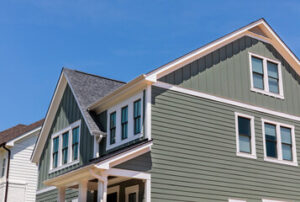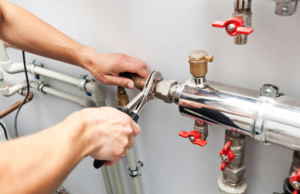Animals play a critical role in our lives, giving us companionship and emotional support. If you are an animal lover and want to build a career helping them, consider becoming a veterinarian.

Veterinarian Lapeer, MI also work on farms, evaluating and caring for livestock like chickens, pigs and cows to ensure safe food. Research veterinarians discover new ways to keep animals and people healthy.
Veterinary services play a critical role in ensuring the health and safety of livestock, pets and wildlife. They provide vaccinations, diagnose and treat illnesses, and carry out a range of other essential tasks. As a result, they are often the first responders to animal emergencies and are tasked with developing, implementing, and monitoring national veterinary management plans. In addition, veterinary workers need to have a wide range of skills and knowledge to perform their jobs well. These include compassion, communication, decision-making and manual dexterity.
If you are interested in a career as a veterinarian, it is important to do your homework before making any decisions about your education and training. This includes understanding how much it will cost you, what types of careers you can pursue with a particular degree and what kind of experiences you need to gain before going on to veterinary school.
The first step in becoming a vet is earning an undergraduate degree in a relevant field. Depending on the requirements of the veterinary school, this could be anything from a biology degree to a degree in animal science. Veterinary schools are highly competitive, so it is important to choose the right undergraduate degree to maximize your chances of acceptance.
It is also important to take a variety of classes, including those in the humanities. Veterinarians need to have good communication and decision-making skills, so taking courses that emphasize these areas can help you prepare for the job. It is also important to have a strong background in the sciences, particularly biology, chemistry and animal health.
After completing their undergraduate degree, future vets must earn their Doctor of Veterinary Medicine (DVM) from an accredited institution like Ross University School of Veterinary Medicine. In the United States, this degree takes four years to complete. However, it is important to note that many universities offer accelerated programs that can lead to the same degree in just three years and three months. During their time in school, future vets should also try to get as much experience as possible working with animals. This can be done by taking on internships or externships, which will help them learn more about the profession.
Job Duties
A veterinarian is responsible for preventing, diagnosing and treating animal diseases and injuries. They perform physical examinations, run tests, prescribe medicines and vaccines, set fractures, treat wounds and euthanize terminally ill or fatally injured animals. Veterinarians also provide preventive care services such as routine check-ups and dental cleanings to keep pets healthy. They are also involved in public health and regulatory compliance initiatives, such as monitoring zoonotic diseases (illnesses that can be transmitted from animals to humans) and enforcing food safety regulations.
Veterinarians need to have excellent communication skills to explain medical diagnoses and treatment options to pet owners. They also need to have a high level of empathy and compassion, as they deal with the emotional stress of caring for sick or injured animals. Additionally, vets need to be physically strong enough to handle large or aggressive animals.
Veterinary medicine is an ever-evolving field, and vets must participate in continuing education to stay current on new treatments and technologies. Some vets specialise in certain areas, such as oncology or dermatology, offering more advanced care to pets with complex conditions.
Many vets work in private practice, running small animal clinics that focus on cats, dogs and other domesticated animals. Others work in larger facilities, such as zoos or wildlife parks, or in research and development labs where they work on developing new medications and vaccines for animal diseases. Still others work for government agencies to help enforce animal welfare and food safety regulations.
All veterinarians perform a variety of tasks. Their responsibilities may include performing surgery, drawing blood for laboratory testing, and giving technical advice on products for pets or livestock. They are also responsible for educating pet owners on how to best take care of their animals, including proper nutrition, behavior and preventive care practices. Additionally, they may be required to conduct euthanasias or administer medication to terminally ill or seriously injured animals. Veterinarians also work to educate the public on the risks of zoonotic diseases, or illnesses that can be spread from animals to humans. They are often required to conduct inspections of farms and food processing plants to ensure they are in compliance with food safety laws.
Work Environment
Veterinarians can work in a variety of settings. Those who focus on pet care may spend most of their time in a hospital or animal clinic, but those who work with larger animals often travel to farms and slaughterhouses. They also may be required to respond to emergency situations outside of scheduled work hours. This can be emotionally stressful, especially when dealing with sick or injured animals and their anxious owners.
The ideal veterinarian work environment should be a supportive one that fosters open communication and promotes teamwork. The best veterinary workplaces offer incentives to their employees to perform well, such as a competitive salary and professional development opportunities. They also encourage their employees to prioritize self-care and manage stress, and they provide them with the tools they need to succeed.
Veterinary work can be both physically and emotionally challenging, but it can also be very rewarding. The career can provide long-term stability and a sense of personal fulfillment, which is why it is an attractive option for those interested in a medical profession that helps make the world a better place.
Many veterinarians enjoy working in private practice because it allows them to create a close bond with their clients and patients. This personal connection helps build trust and reassures pet owners that their pets are receiving the best possible care. Veterinarians who own their own practice can also control the hours they work and establish a more flexible schedule.
In addition, veterinarians who choose to work in the public sector can serve their communities by providing critical services and participating in local events. They can also play an important role in the prevention of disease and improving public health by providing research and education.
Choosing the right veterinarian work environment is vital for job satisfaction and long-term success. Those who are considering becoming veterinarians should consider the pros and cons of each type of work environment to determine which is the best fit for them. A thriving veterinary work environment is an essential part of ensuring quality veterinary care for pets and livestock, so it’s important that all veterinarians find a workplace where they feel supported by their bosses and coworkers.
Salary
As with most jobs, salaries for vets can vary greatly depending on a number of factors, including the area in which they work, the type of employer, and the level of experience. Generally, experienced vets will earn more than those with less experience. Specialization is also important, with vets who specialize in fields like surgery, dentistry, dermatology, and internal medicine earning higher wages than those who do not. The type of employer, whether a private practice, research institute, government agency, or non-profit organization, can also influence salary.
A number of different sources can provide real-time information on the salary for vets, including the Bureau of Labor Statistics, Payscale, and the American Veterinary Medical Association (AVMA). However, it is important to keep in mind that these sources are based on averages, and your actual salary may be significantly higher or lower than the figures that they present.
According to the AVMA, vets in the states typically earn between $40,000 and $100,000 a year. In order to get to the upper end of this spectrum, it is generally necessary to have an advanced degree and significant clinical experience. In addition, you will likely have to spend several years as a veterinary resident, which will cut into your total earning potential.
Another factor to consider when evaluating the salary of a veterinarian is that many vets work incredibly long hours. In fact, one study published in the Veterinary Record estimated that full-time vets work an average of 57 hours per week and practice owners work an eye-watering 71 hours a week!
As a result, most vets often find themselves working overtime and sacrificing personal time in order to make ends meet. In some cases, this can lead to burnout and a loss of passion for the profession, which can ultimately impact their earning potential. Those who are struggling with this issue can seek help from their employers, or choose to pursue a different career path. For example, one vet who had been working in the field for 20 years recently retrained as a teacher and found that this has enabled him to achieve a work-life balance he previously had not been able to attain.

